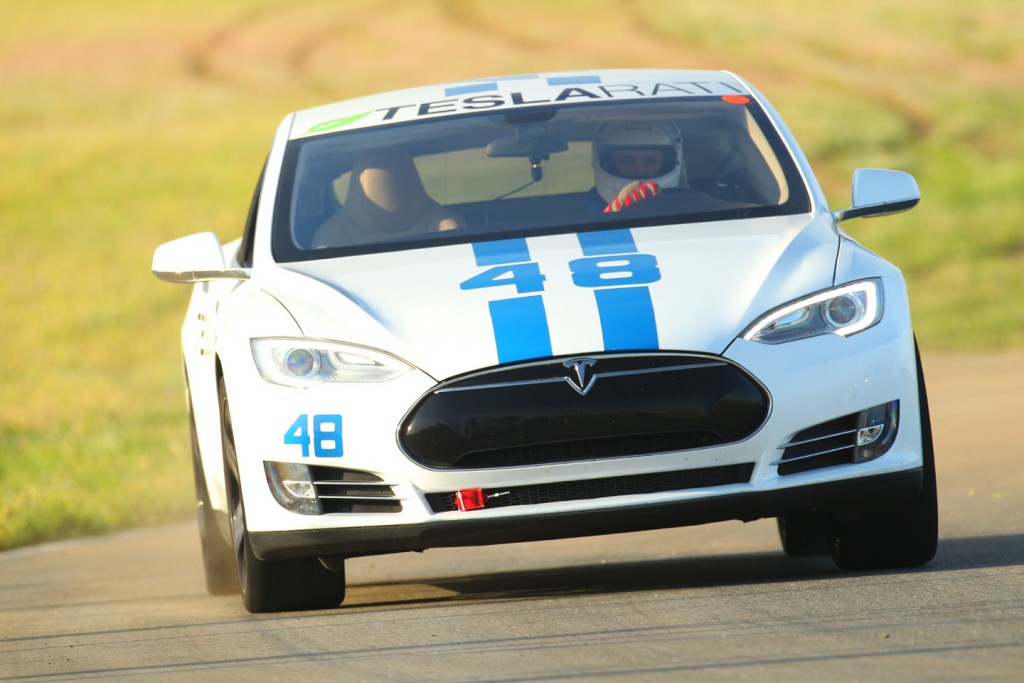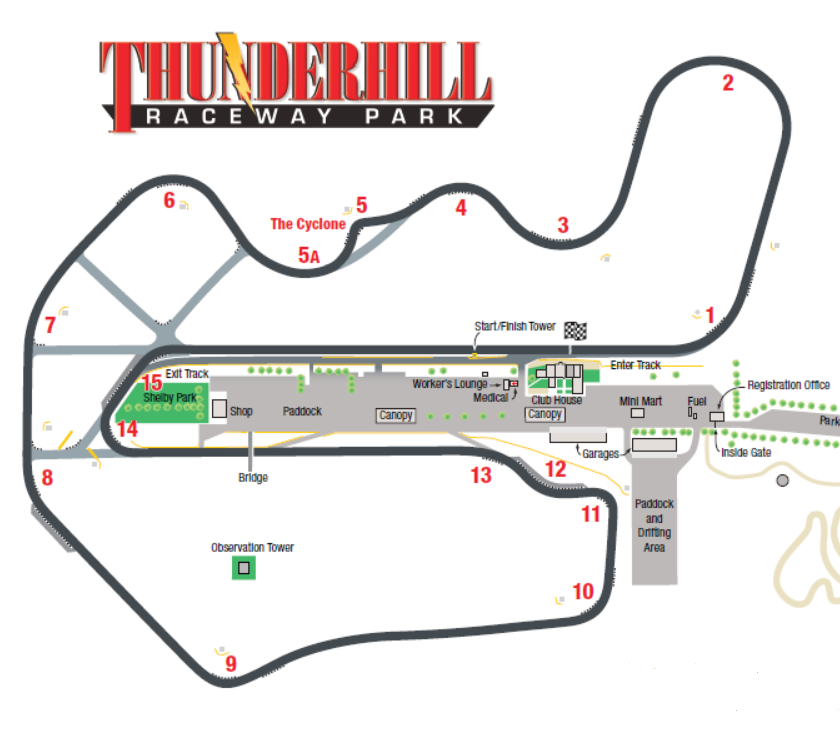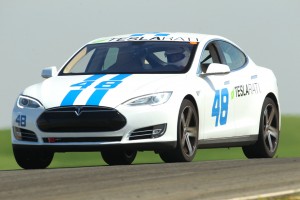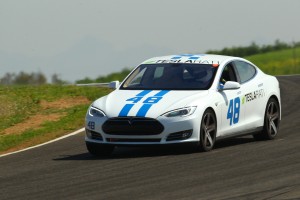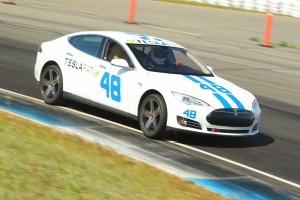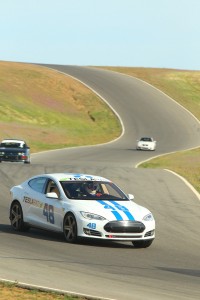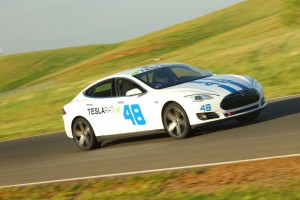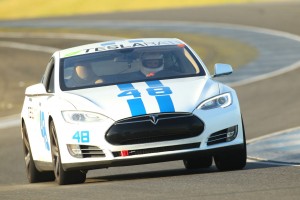Lifestyle
TESLARATI 48 Model S Takes On Thunderhill Raceway
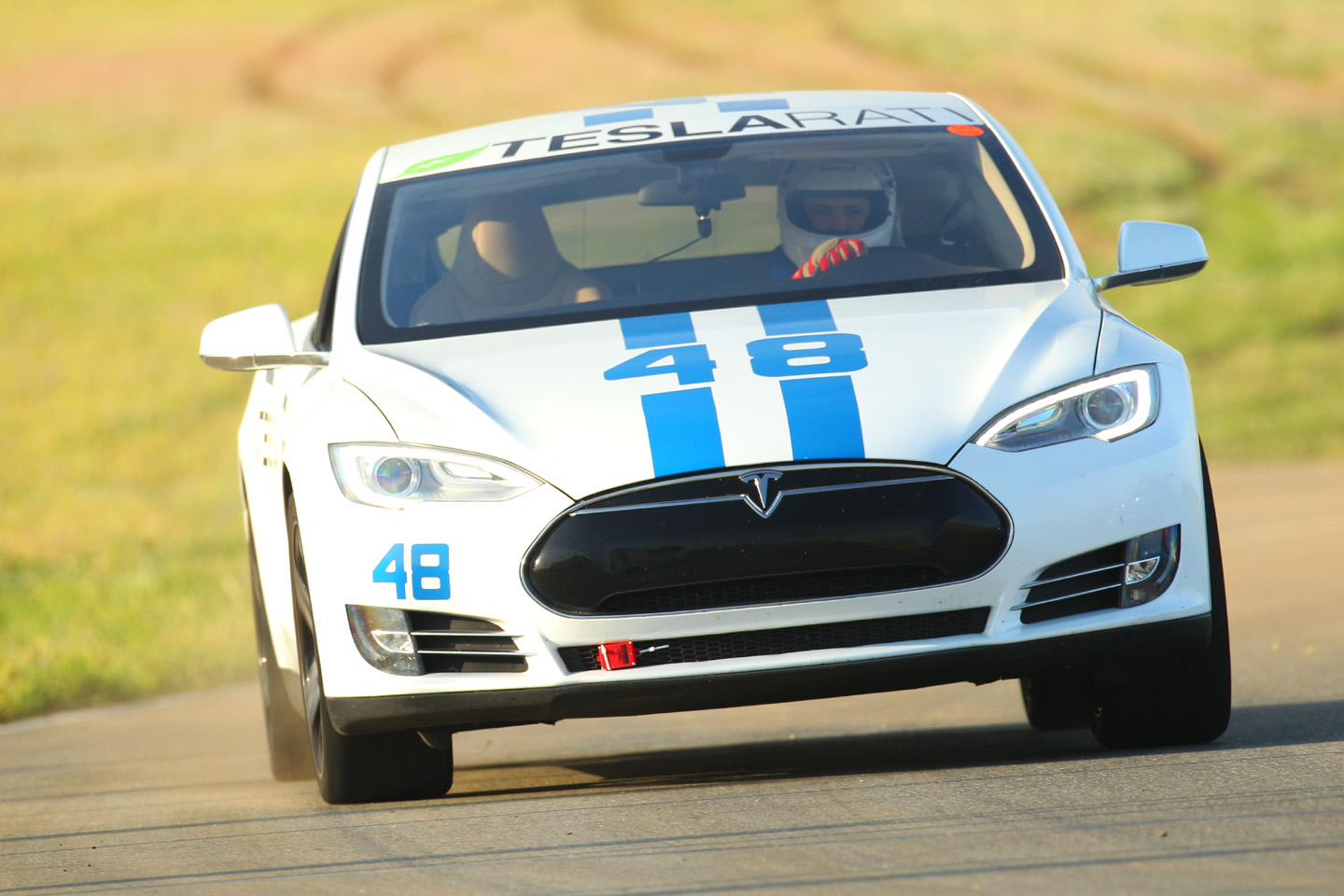
The Track
Thunderhill is one of the most challenging and unique road racing courses we’ve been to. It’s a technical 3-mile road course with 15 turns, located just over an hour north of Sacramento, CA. The course features unique configurations, with sharp elevation changes, blind turns, off-camber turns, and combinations of the above. What we’ve learned is that in some of these unique turns, normal racing lines do not apply, and you have to know specific ways of taking them. Overall it’s a unique and fun track, which takes a lot of courage to drive.
The Tesla Model S
Turn #3, is significantly slanted off-camber, and no turn like this can be found in any other track in California. The Model S has a lot of challenges with off-camber turns in general, and this one in particular, because of the car’s heavy weight.
Turn #5 bypass is sharply downhill and off camber. It’s probably the scariest turn on the whole track. You can’t fully appreciate it from any of the videos or pictures. It’s a blind turn, so you really have to pay attention to flag stations, so you don’t have a collision if there is a car turned around on the other side. Once over the hill, you can’t brake or turn, because the car has very little traction. One or two times we ended up sliding sideways down that hill, while we were learning the track.
Turn #5 section of the track has two configurations, Cyclone or Bypass. Cyclone (in the video below) was really fun, very similar to Laguna Seca’s Corkscrew. The Model S worked the hill really well and felt well under control. Bypass – not so much, because trying to improve here results in the car carrying too much speed for its weight, and you end up sliding downhill off-camber with little control.
Turn #8 is another ‘scary’ turn, but of a different kind since it’s supposed to be taken at full throttle. Easier said than done as you fight your brain’s natural instinct to do the complete opposite. It also leaves zero room for error but can be done with practice.
We completed 10 sessions over 2 days with the Northern California Racing Club (NCRC) in the Open group. Our top speed was 116mph at then end of the front straight-away, and lateral G forces in 1.0-1.2 range. Our new 20″ 285mm Toyo R888 tires are working out quite nicely, but even they could not stop the car from sliding in off-camber turns. Our best lap time was 2:15 bypass and 2:17 cyclone, with the fastest car in this group at 2:00 and the slowest at 2:29. Overheating and resulting power limiting were present on this track but not significantly more or less than other tracks.
Here’s a video of couple of our laps. Negotiating this tracks well requires more than two days of practice, so please don’t judge too harshly, since it was our first time on this track 🙂 We are looking forward to coming back here in the future to continue improving our skills.
Charging and Power Consumption
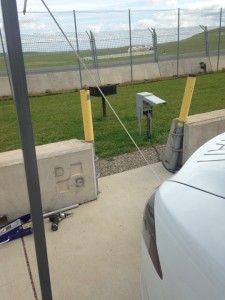 Power consumption was similar to other tracks, at approx 1.2 kW/mile average energy consumption, with approximately 12 rated miles used per lap, and 4 rated miles used per 1 actual mile.
Power consumption was similar to other tracks, at approx 1.2 kW/mile average energy consumption, with approximately 12 rated miles used per lap, and 4 rated miles used per 1 actual mile.
There is a number of 200V 50amp outlets at the track (charging at 24 miles per hour), and the track lets you use them for free. It’s enough to get you through the day, running half of each session.
Corning Supercharger is 35 miles away, so overall, charging situation is covered well at this track.
Travel
It was the furthest we’ve ever driven to a race track. It was a 600-mile 12 hour trip from San Diego. One of our goals has been to prove that, like gasoline cars, not can we only be on the track on equal footing, but also drive to and from the track. It’s not been easy in some cases, but on this trip Superchargers made it easy. 2.5 of the 12 hours were spent on charging at 4 SCs (San Juan Capistrano, Tejon Ranch, Harris Ranch, and Manteca), which is not significantly higher than a gasoline car.

Lifestyle
Tesla Model S Plaid battles China’s 1500 hp monster Nurburgring monster, with surprising results
There is just something about Tesla’s tuning and refinement that makes raw specs seem not as game-changing.

The Tesla Model S Plaid has been around for some time. Today, it is no longer the world’s quickest four-door electric sedan, nor is it the most powerful. As per a recent video from motoring YouTube channel Carwow, however, it seems like the Model S Plaid is still more than a match for some of its newer and more powerful rivals.
The monster from China
The Xiaomi SU7 Ultra is nothing short of a monster. Just like the Model S Plaid, it features three motors. It also has 1,548 hp and 1,770 Nm of torque. It’s All Wheel Drive and weighs a hefty 2,360 kg. The vehicle, which costs just about the equivalent of £55,000, has been recorded setting an insane 7:04.957 at the Nurburgring, surpassing the previous record held by the Porsche Taycan Turbo GT.
For all intents and purposes, the Model S Plaid looked outgunned in Carwow’s test. The Model S Plaid is no slouch with its three motors that produce 1,020 hp and 1,420 Nm of torque. It’s also a bit lighter at 2,190 kg despite its larger size. However, as the Carwow host pointed out, the Model S Plaid holds a 7:25.231 record in the Nurburgring. Compared to the Xiaomi SU7 Ultra’s record, the Model S Plaid’s lap time is notably slower.
Real-world tests
As could be seen in Carwow’s drag races, however, Tesla’s tech wizardry with the Model S Plaid is still hard to beat. The two vehicles competed in nine races, and the older Model S Plaid actually beat its newer, more powerful counterpart from China several times. At one point in the race, the Xiaomi SU7 Ultra hit its power limit due to its battery’s temperature, but the Model S Plaid was still going strong.
The Model S Plaid was first teased five years ago, in September 2020 during Tesla’s Battery Day. Since then, cars like the Lucid Air Sapphire and the Xiaomi SU7 Ultra have been released, surpassing its specs. But just like the Model Y ended up being the better all-rounder compared to the BYD Sealion 7 and the MG IM6, there is just something about Tesla’s tuning and refinement that makes raw specs seem not as game-changing.
Check out Carwow’s Model S Plaid vs Xiaomi SU7 drag race video below.
Lifestyle
500-mile test proves why Tesla Model Y still humiliates rivals in Europe
On paper, the BYD Sealion 7 and MG IM6 promised standout capabilities against the Model Y.

BYD is seeing a lot of momentum in Europe, so much so that mainstream media has taken every opportunity to argue that the Chinese automaker has beaten Tesla in the region. But while BYD sales this year in Europe are rising and Tesla’s registrations remain challenged, the raw capabilities of vehicles like the Model Y are difficult to deny.
This was highlighted in a 500-mile challenge by What Car? magazine, which showed that the new Tesla Model Y is more efficient, cheaper to run, and more reliable than rivals like the BYD Sealion 7, and even the nearly 400 KW-charging MG IM6.
Range and charging promises
On paper, the BYD Sealion 7 and MG IM6 promised standout capabilities against the Model Y. The Sealion 7 had more estimated range and the IM6 promised significantly faster charging. When faced with real-world conditions, however, it was still the Model Y that proved superior.
During the 500-mile test, the BYD nearly failed to reach a charging stop, arriving with less range than its display projected, as noted in a CarUp report. MG fared better, but its charging speeds never reached its promised nearly-400 kW charging speed. Tesla’s Model Y, by comparison, managed energy calculations precisely and arrived at each stop without issue.
Tesla leads in areas that matter
Charging times from 25% to 80% showed that the MG was the fastest at 17 minutes, while Tesla and BYD were close at 28 and 29 minutes, respectively. Overall efficiency and cost told a different story, however. The Model Y consumed 19.4 kWh per 100 km, compared to 22.2 for MG and 23.9 for BYD. Over the full trip, Tesla’s charging costs totaled just £82 thanks to its supercharger network, far below BYD’s £130 and MG’s £119.
What Car? Magazine’s testers concluded that despite BYD’s rapid sales growth and the MG IM6’s seriously impressive charging speeds, Tesla remains the more compelling real-world choice. The Model Y just offers stability, efficiency, and a proven charging infrastructure through its Supercharging network. And as per the magazine’s hosts, the Model Y is even the cheapest car to own among the three that were tested.
Watch What Car? Magazine’s 500-mile test in the video below.
Lifestyle
Tesla Cybertruck slapped with world’s least intimidating ticket, and it’s pure cringe
One cannot help but cringe and feel second-hand embarrassment at the idea of a person just driving around with a stack of these babies.

A Cybertruck parked at Stanford Shopping Center in California was recently hit with what might be the most try-hard piece of paper ever slipped under a wiper blade: a “fake citation” accusing the driver of supporting a “fascist car.”
The note, shared on X by Tesla staff program manager Ryan Torres, quickly made the rounds on X, where it quickly gained attention as an example of how not to protest.
The world’s least intimidating ticket
According to the citation, the supposed “violation” was “driving a fascist car.” The remedial action? Take the bus, call an Uber, or ride a bike. The note also dubbed Elon Musk a “chainsaw-wielding Nazi billionaire.” Now, protests against Tesla and Elon Musk have become commonplace this year, but one cannot help but cringe and feel second-hand embarrassment at the idea of a person just driving around with a stack of fake anti-Tesla/Musk citations.
Torres pointed out the irony himself in his post on X. Tesla currently employs over 140,000 Americans, and SpaceX has put the U.S. firmly back at the top of space technology. As Torres put it, maybe the person behind the world’s least intimidating ticket should “read a book on innovation before vandalizing” other people’s property.
Peak performative clownery
Not to mention that the fake ticket’s logic collapses under its own weight. EVs like the Cybertruck are literally designed to reduce emissions, not “destroy the economy.” If anything, Tesla has bolstered the United States’ economy by fueling jobs in engineering, manufacturing, and clean energy. It’s not the first time a Tesla has been the target of vandalism or politically charged notes, but this one stands out for sheer cringe value.
Torres summed it up neatly: “Peak clownery.” On that point, at least, the citation earns full marks. In a way, though, perhaps cringe fake tickets are not as bad as the literal firebombs that were being thrown at Tesla stores and cars earlier this year because some critics were gleefully misinformed about Elon Musk.
